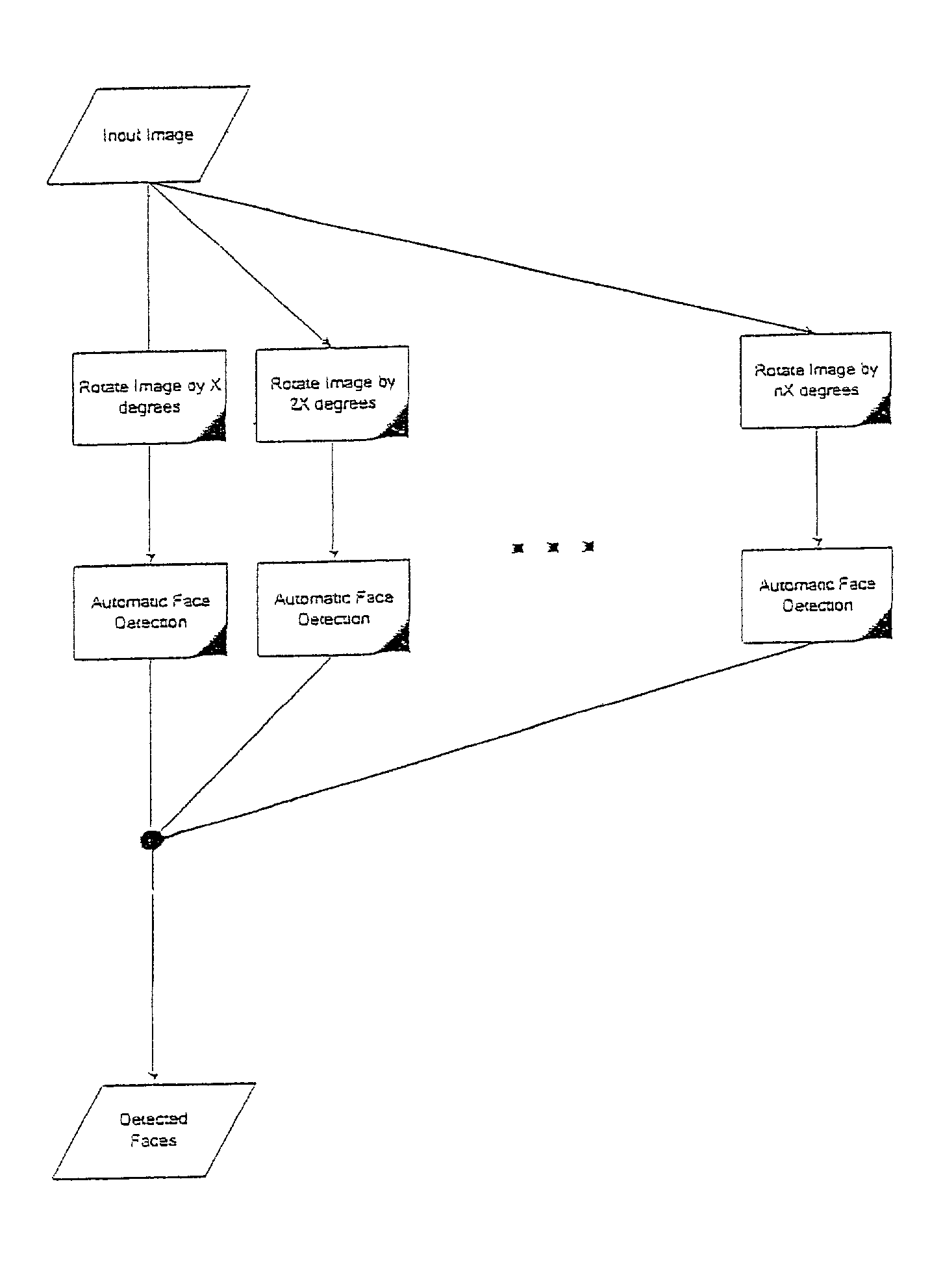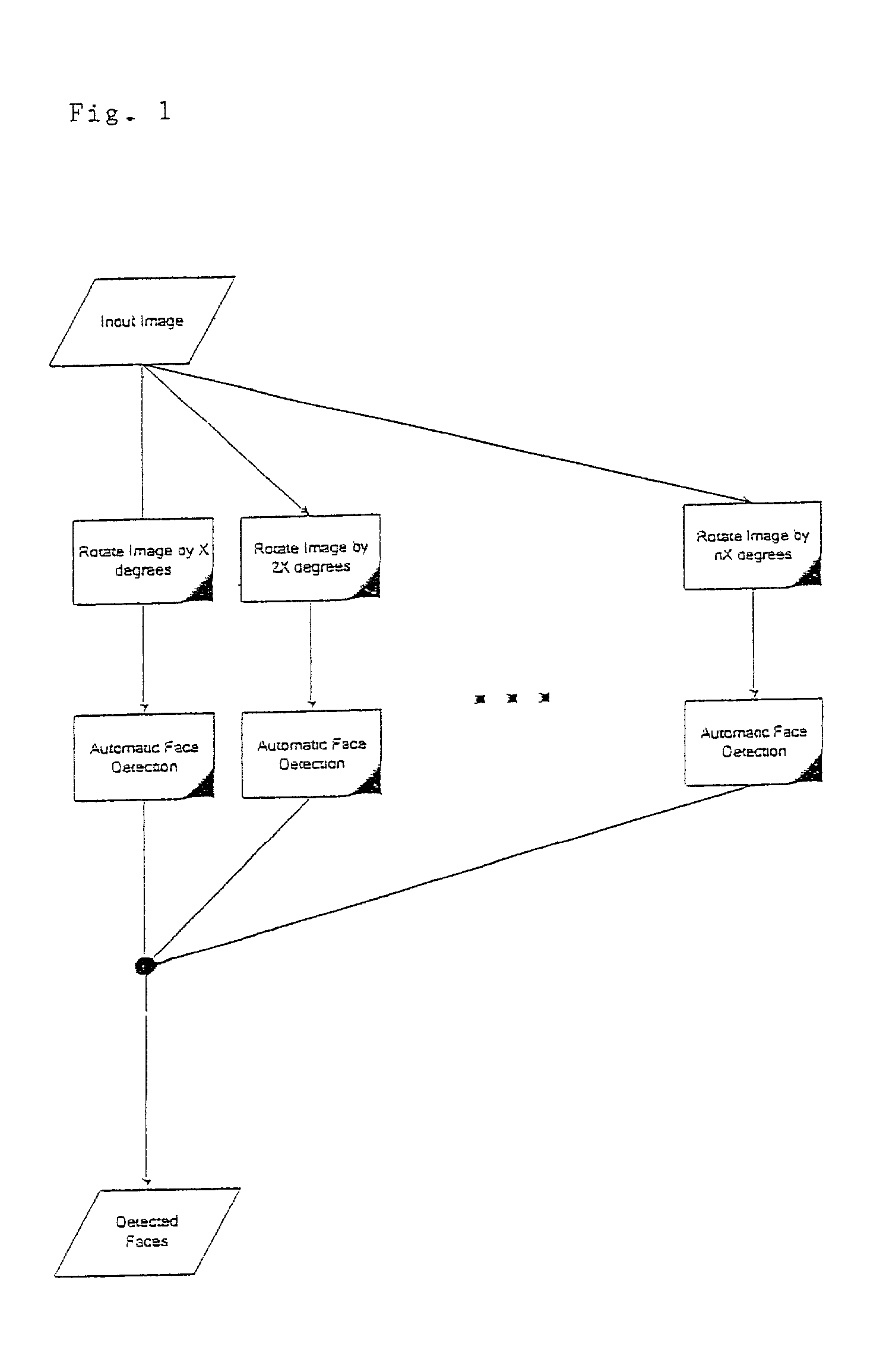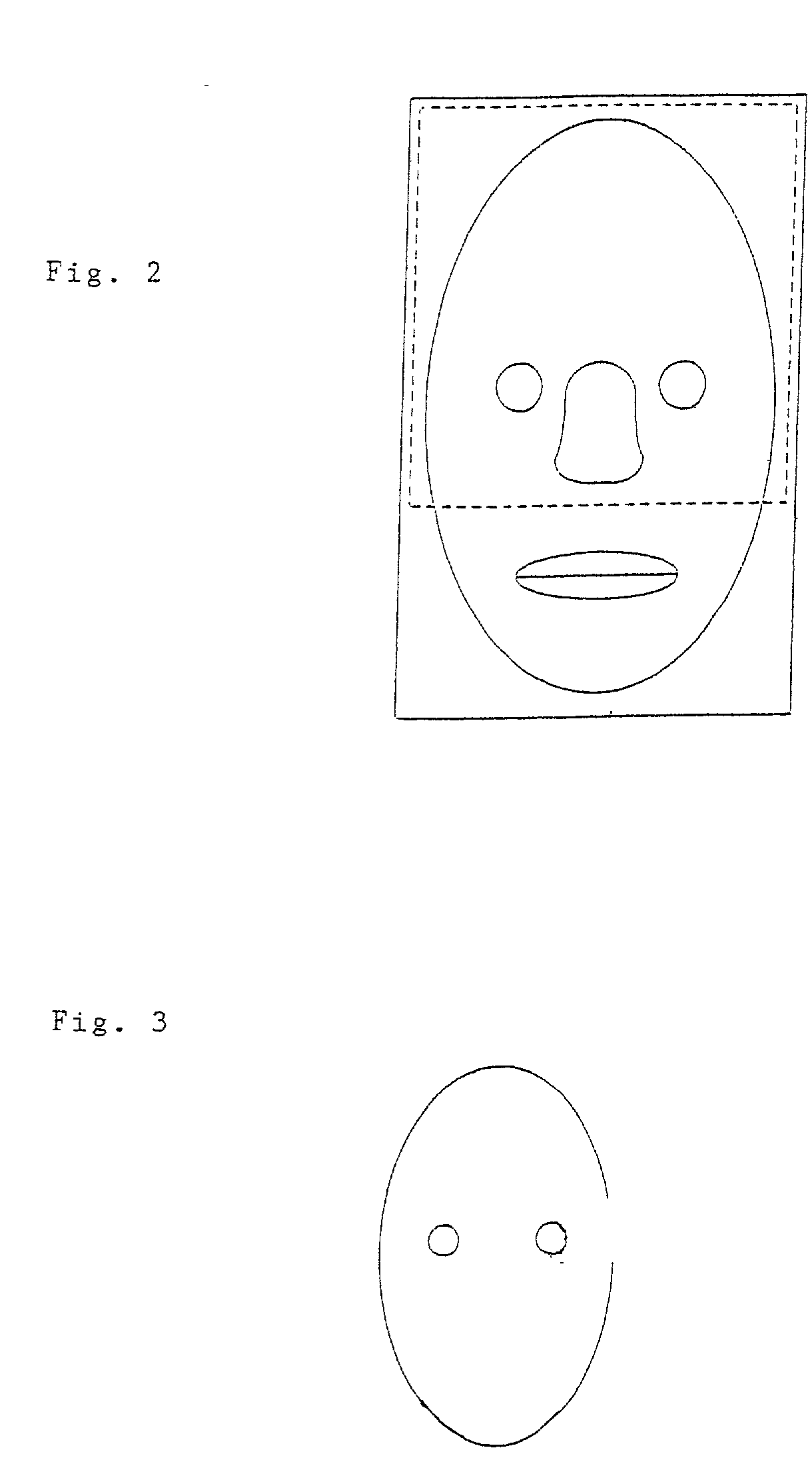Image colour correction based on image pattern recognition, the image pattern including a reference colour
a colour correction and image technology, applied in image data processing, color television, image data processing details, etc., can solve the problems of insufficient colour correction algorithms, time-consuming memory space as well as computer operation, and difficult to achieve the effect of reducing the number of errors
- Summary
- Abstract
- Description
- Claims
- Application Information
AI Technical Summary
Benefits of technology
Problems solved by technology
Method used
Image
Examples
Embodiment Construction
[0053] FIG. 1 shows a flow diagram for face detection in a refined version.
[0054] FIGS. 2 and 3 depict face pictograms to be identified in a digital representation of an image.
[0055] FIG. 4 shows memory colour models for "neutral" (full line), "blue sky" (dashed), "skin" (dotted), and "foliage" (dash-dotted).
[0056] FIG. 5 shows prior knowledge distributions p (log(rf), log(gf)) for digital cameras in general (top) and for a particular model (Kodak DC 210 zoom, bottom).
[0057] FIG. 6a shows an optimisation via forward modelling, in accordance with a basic embodiment of the present invention.
[0058] FIG. 6b shows an optimisation via forward modelling, where the basic embodiment is combined with colour management for a known output channel.
[0059] FIG. 7 shows a schematic structure of a photographic image processing device, which may also be called a colour correction device in accordance with an embodiment of the present invention.
DETAILED DESCRIPTION OF THE PREFERRED EMBOIDMENTS
[0060] I...
PUM
 Login to View More
Login to View More Abstract
Description
Claims
Application Information
 Login to View More
Login to View More - R&D
- Intellectual Property
- Life Sciences
- Materials
- Tech Scout
- Unparalleled Data Quality
- Higher Quality Content
- 60% Fewer Hallucinations
Browse by: Latest US Patents, China's latest patents, Technical Efficacy Thesaurus, Application Domain, Technology Topic, Popular Technical Reports.
© 2025 PatSnap. All rights reserved.Legal|Privacy policy|Modern Slavery Act Transparency Statement|Sitemap|About US| Contact US: help@patsnap.com



